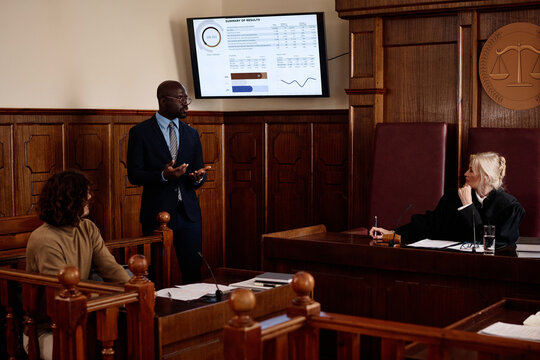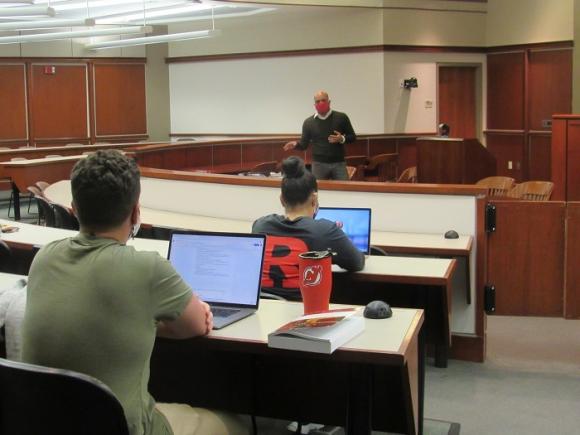Why Your Next Situation Needs a Strong Trial Presentation: Insights and Techniques for Legal representatives
Why Your Next Situation Needs a Strong Trial Presentation: Insights and Techniques for Legal representatives
Blog Article
Browsing the Intricacies of Trial Presentations: Tips for Seamless Delivery and Engaging Disagreements
In the realm of legal process, the art of trial presentation stands as a critical determinant of success. The intricacies intrinsic in test discussions call for a fragile balance of finesse, technique, and skill.

Recognizing Trial Goals
To effectively browse a trial, it is vital to have a clear understanding of the goals that need to be achieved. Before entering the court, lawful teams should specify their objectives and desired end results. These objectives work as guiding principles throughout the test, shaping strategies and affecting decision-making processes.
Understanding test goals entails a detailed analysis of the instance, legal precedents, and the customer's benefits. Trial Presentations. It calls for a precise assessment of the truths, identifying key issues, and anticipating possible obstacles. By establishing details and quantifiable goals, attorneys can tailor their arguments and discussions to align with the preferred results
Furthermore, a clear grasp of test purposes allows legal teams to focus on proof, witnesses, and legal arguments effectively. It permits for the growth of a systematic story that resonates with the discretionary, enhancing the overall instance discussion.

Organizing Evidence Efficiently
Having a clear understanding of trial objectives lays the structure for arranging evidence efficiently in legal process - Trial Presentations. By lining up the presentation of evidence with the wanted results of the test, legal teams can reinforce their arguments and enhance their persuasiveness. One essential aspect of arranging evidence is categorization. Organizing evidence based upon styles or relevance to certain lawful components can help enhance the discussion and make complicated details much more absorbable for the judge or jury.
One more crucial element in arranging proof successfully is developing a sensible flow. Providing evidence in a meaningful and consecutive fashion can aid build a compelling narrative that supports the lawful disagreements being made. In addition, making use of visual help such as charts, timelines, or charts can even more improve the organization of evidence and assist in making clear complicated partnerships or series of occasions.
Moreover, ensuring that all proof provided is acceptable and appropriate to the situation is important. Unimportant or inadmissible evidence can take away from the toughness of the disagreement and possibly hurt the credibility of today event. Therefore, a thorough review and selection procedure need to be carried out to include only one of the most impactful and legitimately audio evidence in the test presentation.
Crafting Influential Narratives
Crafting engaging stories plays a critical function in providing convincing debates throughout legal proceedings. A well-crafted narrative has the power to mesmerize the target market, stimulate feelings, and ultimately guide the choice for today celebration. When creating a story for a test discussion, it is necessary to develop a clear story that highlights vital points and connects them in a coherent way. Begin by laying out the facts of the case in an engaging manner, ensuring that the series of events is very easy to adhere to. Present personalities properly, offering background details that helps the audience recognize their activities and inspirations. Additionally, integrating brilliant descriptions and interesting language can bring the story to life, making it a lot more memorable for the discretionary. By weaving with each other proof, testimony, and lawful disagreements right into a cohesive and convincing narrative, attorneys can effectively promote for their customers and enhance the likelihood of a favorable result in the court.
Mastering Aesthetic Aids
Reliable use visual help is key to boosting the influence and clarity of test discussions. Visual aids, when made use that site of tactically, have the power to streamline intricate information, strengthen essential factors, Homepage and leave a long lasting impression on the court and court. To grasp visual help in trial discussions, it is crucial to make certain that they are clear, concise, and relevant to the arguments being made.
When incorporating aesthetic aids, such as charts, timelines, photographs, or graphs, right into a trial discussion, it is necessary to keep them visually appealing yet expert. The visuals need to complement the spoken disagreements, giving a graph of the details being talked about without overwhelming the target market with unneeded details.
Furthermore, exercising with the aesthetic aids beforehand is necessary to make certain a seamless distribution during the trial. Familiarizing oneself with the material, transitions, and timings of each aesthetic help can help maintain the flow of the presentation and protect against technological glitches that may emerge.
Providing Impactful Closing Debates
A compelling closing debate acts as the end result of a test presentation, encapsulating the core narrative and persuading the discretionary towards a favorable decision. To supply an impactful closing disagreement, it is important to succinctly summarize bottom lines, highlight the strengths of your instance, and deal with any weaknesses in a critical way. Begin by describing the major debates that support your client's placement, highlighting why the evidence offered throughout the trial supports your story. It is necessary to create a feeling of communication and clearness, assisting the court and court in the direction of the wanted conclusion.
Furthermore, including sob story can additionally strengthen your closing argument. By humanizing the case and linking on a personal degree with the decision-makers, you can stimulate compassion and understanding, influencing their assumption of the facts presented. Additionally, restating the legal requirements that must be satisfied for a positive ruling can enhance the legitimacy of your setting. Eventually, a well-crafted closing argument ought to leave a long lasting perception, engaging the judge and jury to regulation in your customer's favor.
Final Thought
To conclude, mastering trial presentations involves understanding objectives, arranging proof, crafting narratives, using aesthetic help, Our site and providing impactful closing disagreements. By carrying out these techniques successfully, lawyers can offer their situation effortlessly and make compelling debates in the court. It is essential to browse the intricacies of test presentations with accuracy and skill to achieve success in lawful process.
By straightening the presentation of evidence with the wanted outcomes of the test, legal teams can strengthen their disagreements and enhance their persuasiveness (Trial Presentations). To master visual aids in trial presentations, it is important to guarantee that they are clear, concise, and appropriate to the disagreements being made
An engaging closing debate offers as the end result of a test presentation, encapsulating the core narrative and convincing the judge and court in the direction of a desirable choice. Begin by detailing the main disagreements that sustain your client's placement, stressing why the proof provided throughout the trial sustains your story.In final thought, mastering trial presentations entails comprehending objectives, organizing proof, crafting narratives, using aesthetic aids, and providing impactful closing debates.
Report this page